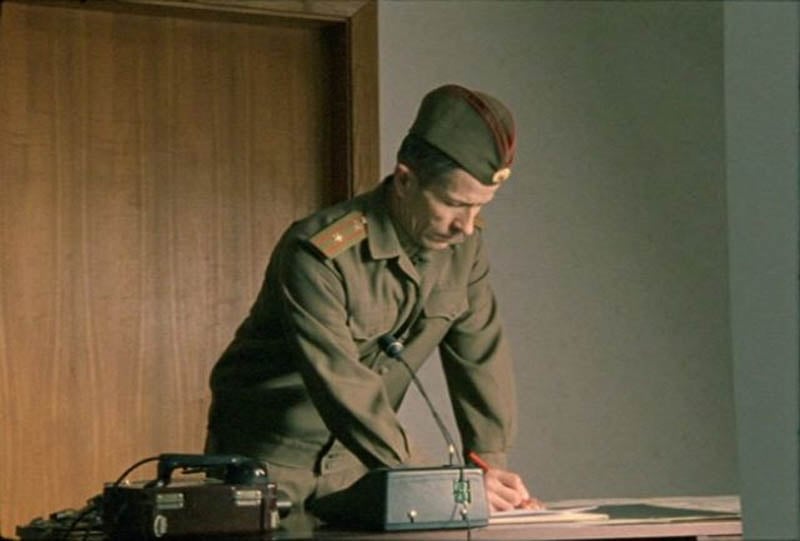
© » KADIST
Thomas Kilpper
Drawing & Print (Drawing & Print)
These two images come from the series called “State of Control” which Kilpper made in the building formerly occupied by the Stasi in Berlin. As a symbol of the past there could be none more powerful than this. By carving into its floor, Kilpper laid bare its history by making images of its occupants and political figures associated with that period of history.

© » KADIST
Bettina Pousttchi
For Bettina Poutsttchi’s large-format, site-specific photographic work Echo (2009–10), the four exterior walls of the Temporäre Kunsthalle Berlin were covered with a digitally edited collage of archival images of the glass-and-steel facade of the Palast der Republik (Palace of the Republic), which had once been located nearby. That milestone of late East European modernism was completed in 1976. It served as the seat for the Volkskammer—the parliament of the German Democratic Republic (GDR).

© » KADIST
Deimantas Narkevicius
The Dud Effect is a film that revisits the fear of nuclear attacks during the Cold War by staging the firing of a R-14 missile by a solitary soldier on the site of a real Soviet launch base installed in Lithuania. For this film, Deimantas Narkevicius used no animation or 3D effects, instead it is the silence of the place interrupted by the voice of the Russian soldier (who truly served on a military base in Lithuania) that creates this worrying atmosphere in which the execution of such an act becomes possible. The War Game (1965) by Peter Watkins was a source of inspiration, since he displays a personal and collective concern about the danger of the nuclear arms race in the United Kingdom in the 1960s.
Thomas Kilpper
- location: Stuttgart, Deutschland
- year born: 1956
- gender: male
- nationality: German
Bettina Pousttchi
In recent years Bettina Pousttchi’s work has dealt with themes related to memory, time and history and she is particularly interested in the consequences of the fall of the Berlin Wall...
Deimantas Narkevicius
Deimantas Narkevicius is a key figure in the Lithuanian art scene today...
